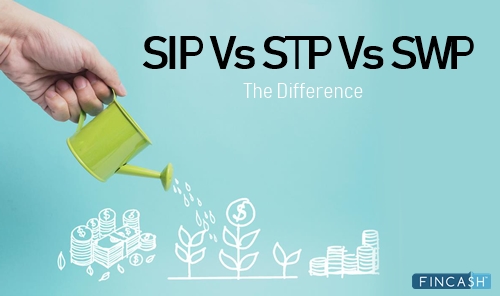
How is SIP different from STP and SWP?

Mutual fund investments offer a great opportunity for the common man to invest and earn some capital gains. Mutual funds are a basket of securities managed by professional fund managers who offer active risk management. Mutual funds invest across various asset classes like equity, debt, gold as well in global economies, sectors / industries and money market instruments like company fixed deposits, certificate of deposits, commercial papers, debentures etc. The investment objective of a mutual fund scheme may vary depending on its nature and what it wants to achieve over a stipulated period.
While investing in mutual funds has made easy with SIP, very few investors are aware about STP and SWP. These terminologies can get confusing for someone who is a first time investor and this article aims to clear doubts in case you had any.
What is SIP, STP and SWP?
SIP: Systematic Investment Plan or SIP as it is commonly referred to as, is an investment approach preferred by most mutual fund investors. It is nothing but a systematic and easy way to invest in market linked schemes like mutual funds. Mutual fund investors are privileged to have the option of SIP investing. SIP is only available for mutual fund investors and one can invest small fixed sums at regular intervals in any mutual fund scheme for an indefinite time.
STP: Systematic Transfer Plan or STP is a simple and easy way to transfer your money from one mutual fund (usually a debt fund like liquid or overnight fund) to another mutual fund scheme (usually an equity fund) in a systematic and intervallic manner. When an individual opts for STP, they give the AMC the consent to transfer sums at regular intervals from one scheme to another. The only catch here is that the two mutual funds must belong to the same AMC. Investors cannot transfer between mutual funds belonging to two different fund houses. This investment approach is carried out by those who want to invest in equity funds but because the current markets are volatile, they park their money in a debt fund and later when the markets normalize, the money is transferred at regular intervals from to the equity fund.
SWP: Systematic Withdrawal Plan or STP is works different than STP and SIP. SWP gives investors the privilege to withdraw any sum at any point of time form a mutual fund scheme. Investors may withdraw the sum to rebalance their investment portfolio and invest in other mutual fund schemes or to tend to their personal income needs. By now you must have understood that SWP work in an exact opposite manner as compared to SIP. People who make a lumpsum investment in mutual funds or those who have accumulated a sizeable corpus over the years can opt for SWP and decide how much money to withdraw at what intervals.
How is SIP different from STP and SWP?
With SIP, one can invest small amounts at periodic intervals and benefit from investment techniques like power of compounding and rupee cost averaging. Compounding will only happen if you remain invested for a longer time period, let’s say minimum 10 years. Rupee cost averaging is another investment technique which minimizes an investor’s overall investment risk and allows them to benefit from the falling markets.
Investors who are unsure about how much money they need to invest to attend to their financial goals can make the most out of SIP calculator, a free online too available on almost every mutual fund website. SIP is an investment approach to invest small amounts at systematic intervals, whereas STP is a way to systematically transfer from one mutual fund scheme to another and SWP is systematic withdrawal approach.

